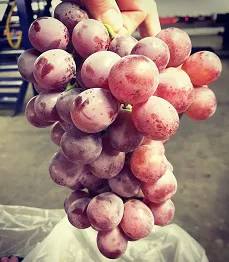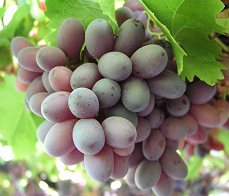 Early autumn rain and even reports of localised hail have interrupted the grape harvest in the Hex River Valley, as it nears the end of an exhausting season.
Early autumn rain and even reports of localised hail have interrupted the grape harvest in the Hex River Valley, as it nears the end of an exhausting season.
De Doorns has had almost 40mm rain and Worcester 25mm the past weekend and in the Hex River Valley, the Crimson harvest will only continue next week.
“We can do with this break, to give the market some breathing space,” says a grape grower-exporter. “There are just too many grapes, and too much fruit on the markets.”
Oversupply on both the European and Far Eastern markets, with the expected effect from Peruvian and Indian grapes and Chilean cherries respectively, but that’s only part of a complicated season, grape industry insiders tell FreshPlaza.
South African grape industry will have to re-assess its cultivar portfolio
Slack demand led to grapes accumulating in cold stores in the Cape. A number of the more recent additions to the grape portfolio, particularly in the black seedless category, “fell down on their noses” this season, another grape trader notes.
“The problem with the black seedless category is that it never really grew, it remained at 8 to 12% of purchases. Demand for some of these newer black seedless cultivars just is not there. Clients say they are not interested. For some of the varieties it was an absolute disaster. Fruit burst, fruit went bad. Empty shelves lose a retailer much more money than it gains from new varieties.”
Retailers’ appetite for new varieties has been stimulating their development, as they chase after something new within the familiar grape category where blueberries and other fruit eat away at its market share, but this season showed up the shortcomings of some of these new varieties.
Some of these newer varieties were possibly not adequately tested before release, it is felt in some quarters, and the South African grape industry will have to get rid of the varieties that failed this season. There is an expectation that this varietal shake-up could set back growth in the grape industry for the next three to four years as the industry steps back to re-assess its grape portfolio.
Some of these new varieties are not very demanding in its cultivation. Coupled with an overestimate of the market for these varieties (some of them visually quite unusual) led to too many hectares planted, according to some in the industry, and this season producers found that retailers in the EU and the UK just weren’t interested.
Industry goes back to Crimson The response of buyers have been to go back to what they know and trust: Crimson Seedless.
The response of buyers have been to go back to what they know and trust: Crimson Seedless.
“Crimson could be back in the pound seat. Or so we hope,” the trader, who asked not to be named, continued. “The pendulum is swinging back to the reliable varieties.”
Crimson Seedless is a mainstay of the Western Cape grape industry, making up the majority of vineyards in the Hex River and Berg River valleys.
On white grapes, the situation’s different. The newer white varieties like Arra15 and Sweet Globe perform better and find favour with the market.
